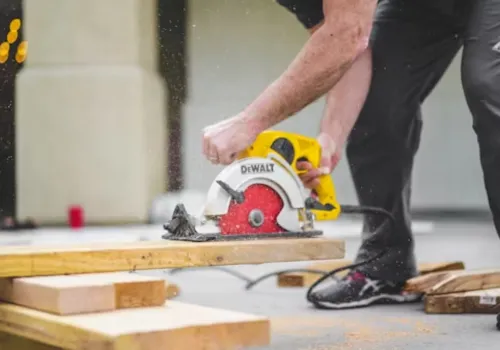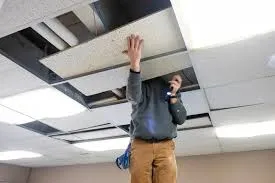
Idaho’s $2 billion funding initiative, approved by the legislature last year to help schools repair and replace deteriorating facilities, is proving inadequate for many districts, particularly smaller, rural ones. While the bill was a significant step forward in addressing the state’s aging and often unsafe school infrastructure, a recent state cost estimate and reports from various districts show that the funding falls short of meeting the most critical needs.
Despite receiving part of the historic funding, districts like Boundary County are still grappling with extensive repairs. The county, which received about $5 million, has faced repeated failures in securing voter approval for bonds. In 2022, two bond proposals to replace an elementary school with failing plumbing, frigid classrooms, and a roof that leaks into buckets were both rejected. Although 54% of voters supported the bond, it wasn’t enough to meet the two-thirds majority threshold required by Idaho law.

"Even spread out over several years to address issues, it won’t be enough to cover all the needs," said Joe Steele, superintendent of the Butte County School District, reflecting the growing frustration of district leaders across the state.
The funding allocated from the $2 billion bill has been distributed based on student enrollment, with smaller districts receiving a fraction of the necessary amounts for repairs and new facilities. An analysis by ProPublica and the Idaho Statesman found that around 40% of Idaho's school districts will receive less than $2 million, which administrators say is not enough to cover their biggest repairs. For example, Cassia County’s most urgent needs include adding 13 classrooms and building a gym, estimated to cost around $30 million, while the district is set to receive just $21 million. Similarly, the Council School District needs $8 million for a new elementary school but will only receive about $1 million.
Governor Brad Little, recognizing the gap in funding, proposed an additional $50 million per year for school facility improvements, which would go towards helping rural districts with their facility needs, mental health services, school safety, and literacy initiatives. However, the exact breakdown and distribution of this funding remain to be seen, and districts remain concerned that without a more significant financial commitment, the problem will continue to worsen.
Idaho’s bond approval process further exacerbates the challenge. The state’s requirement for two-thirds of voters to approve a bond has been criticized by superintendents who claim it’s an almost insurmountable hurdle. Most other states require a simple majority, making it easier to secure funding for construction and repairs. As a result, many school districts, especially those in rural areas, struggle to get the necessary voter support for bonds.
The state’s reluctance to invest more in school facilities has meant that students in Idaho often learn in substandard conditions. Last year, ProPublica and the Idaho Statesman reported how some schools had faulty heating systems, leaking roofs, broken plumbing, and overcrowded classrooms. Despite the state’s chronic underinvestment in education, Idaho continues to rank near the bottom in terms of education spending per pupil.

While the state’s new funding bill includes a provision for $1 billion to be allocated to a School Modernization Facilities Fund, a large gap remains between the money allocated and the estimated cost of repairs. According to the Idaho Department of Education, it would take more than $8 billion over the next decade to fix and maintain every school in the state. However, the actual funding allocated from the bill is only a fraction of that — $1 billion for school modernization, plus an additional $250 million for paying off existing bonds, leaving many schools with insufficient resources.
Small districts, such as Swan Valley in eastern Idaho, are particularly vulnerable. Swan Valley’s Superintendent Michael Jacobson expressed concerns that the lump sum of about $200,000 his district received would only allow them to finish one major project — replacing their heating and air conditioning system. But with ongoing needs and limited funds, Jacobson is worried that future maintenance and emergency repairs could be neglected.
“It’s nerve-wracking to think the district might not get any more money for its facility for nearly a decade,” Jacobson said, adding that the district needs $3.3 million over the next 10 years to meet its repair and maintenance needs.
While larger districts, such as West Ada School District, will receive more substantial portions of the funding — about $140 million — they too face challenges. Some have already begun using funds for maintenance staff, who are crucial for everyday operations. The Bonneville School District, for instance, is experiencing a shortfall of $1 million in its maintenance budget due to the shift in how the new funding bill is structured. If the state does not restore funding for maintenance, the district may have to ask voters to approve a tax increase, further adding to the financial burdens on local taxpayers.
Local school administrators continue to push for more funding and a change to Idaho’s bond approval requirement. With so much of the state’s funding reliant on voter-approved bonds, superintendents fear that necessary repairs and replacements will continue to be delayed. In Boundary County, the district is preparing to ask voters for additional funds once again, but with past bond proposals failing, it’s unclear if voters will support another measure.
Jan Bayer, superintendent in Boundary County, voiced concerns about the safety of students if the situation worsens. "It’s getting to the point where we’re just getting nickeled and dimed to death," Bayer said, expressing the frustration that many administrators feel.
As Idaho’s school districts continue to navigate these challenges, there’s an urgent need for a comprehensive solution that provides both immediate and long-term funding to ensure that every student has access to safe, modern school facilities. While the $2 billion funding bill was a step in the right direction, more support is required to meet the growing demands for school repairs and to address the long-standing disparities in funding across the state’s districts.
Originally reported by Becca Savransky, Idaho Statesman in Propublica.